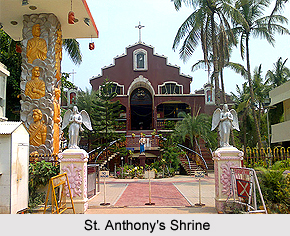 Palavakkam is located in Kanchipuram district in the Indian state of Tamil Nadu. It is a census town situated on the East Coast Road almost 6 km south of Adyar. Thiruvanmiyur, a locality in southern Chennai having many IT parks like TIDEL Park is located nearby.
Palavakkam is located in Kanchipuram district in the Indian state of Tamil Nadu. It is a census town situated on the East Coast Road almost 6 km south of Adyar. Thiruvanmiyur, a locality in southern Chennai having many IT parks like TIDEL Park is located nearby.
Demography of Palavakkam
According to the census report of 2001 Palavakkam had a population of 14,369. Males constitute 51% and females 49% of the population. The average literacy rate of Palavakkam is 74%. It stands higher than the national average of 59.5%. The male literacy is 78%, and female literacy is 68%. Here 12% of the population is under 6 years of age.
Palavakkam has a Panchayat with strength of 15 Members. Major developmental works have been carried out here that has helped it to expand from a small tiny village to a hub village. The Panchayat consists of political candidates from various parties. Palavakkam is predominately resided by Local fisherman folks, Muslims, Dalits, Nayakkars, and Gramanieses.
Educational Institutes of Palavakkam
Palavakkam has established several schools to serve the educational needs to the children residing in the town. It has many private schools as well as a government school like Manuelmony Matriculation School. Dr. A.L Mudaliar Matriculation school operates within the Madras University colony. Almost 20 years ago a typewriting institute was also established in the locality.
Pilgrimage Places in Palavakkam
Palavakkam located in Chennai is a famous pilgrimage centre visited by many devotees.
There are two main Hindu temples located here. Apart from these are one main Islamic mosque and four Churches here.
St. Anthony`s Shrine
It us one of the famous churches located on the seashore of Chennai. During the festive season huge crowds of people visit the shrine. It has a 100 Feet Eucharistic Tower and is adorned with exquisite artwork.
Aalladi Amman Temple
It is one of the oldest temples located in Palavakkam. The temple was earlier located on the ECR main road. However, when the road was broadened it was shifted to Pachaiappan Street. Presently the temple is being managed by the founder`s family.
Masjid Noor
It is located on the ECR on the seaside. It serves as an important place of worship for Muslims residing in Palavakkam.
Fathima Center
The Fathima Center is situated close to the Madras University Campus. The organisation founded by Rev. Fr. Nicholas Gruner is being promoted by an International Centre. Its headquarters is located at Fort Erie, Canada. In India, presently it is situated in Bharatidasan Street in Palavakkam.
Palavakkam is well connected with all modes of transport. Frequent bus services are available for the town. Tourists can also take autos to reach Palavakkam.



















